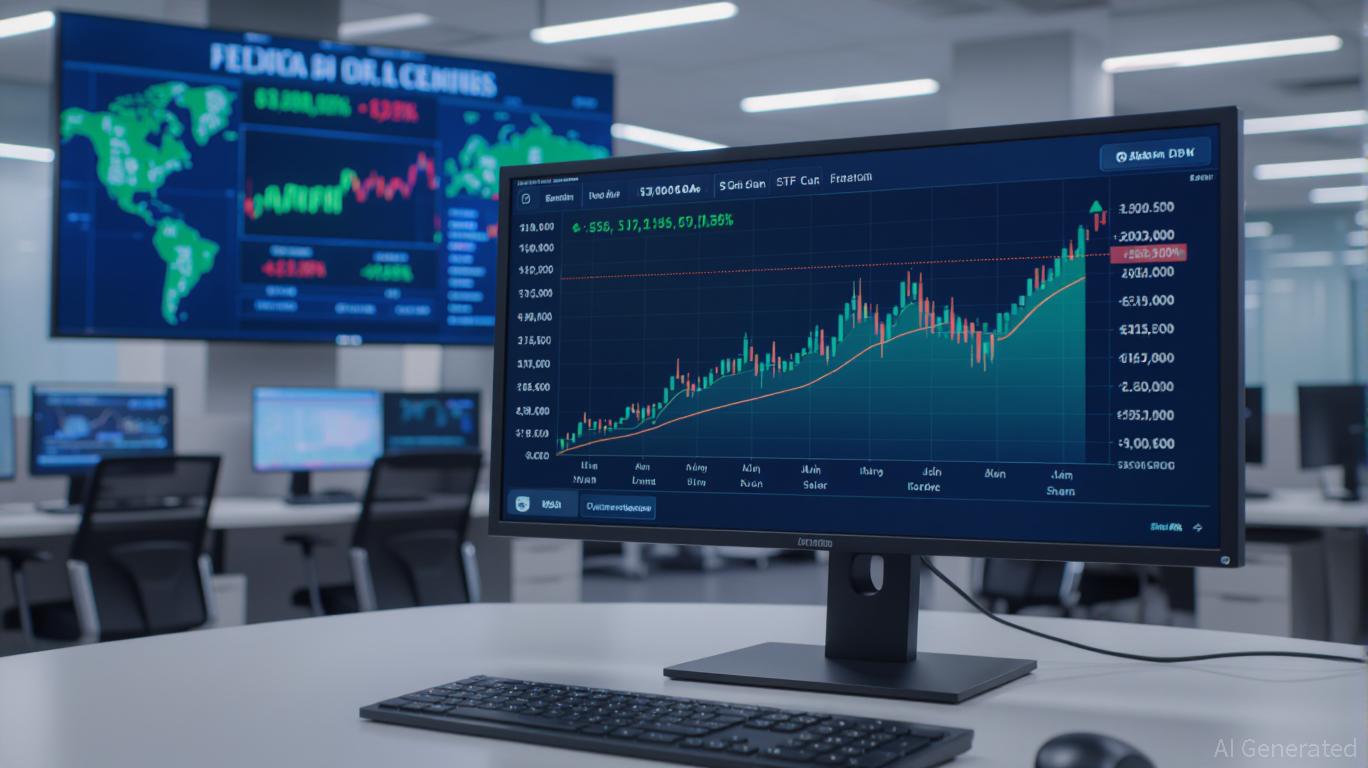Vitalik Buterin Supports ZKsync: What This Means for Ethereum’s Development
- Vitalik Buterin endorsed ZKsync's Atlas upgrade, promising 15,000 TPS, 1-second finality, and near-zero fees for Ethereum scalability. - The upgrade enables direct L2-L1 connectivity, transforming Ethereum into a real-time liquidity hub for institutional and RWA applications. - ZK token surged 50% post-endorsement, highlighting market validation of scalability solutions aligned with Ethereum's decentralization goals. - Upcoming token unlocks from Linea, Aptos, and Avalanche may introduce volatility, emph
The Technical Breakthrough: ZKsync's Atlas Upgrade
Launched in 2025, the Atlas upgrade by ZKsync marks a transformative leap for Ethereum’s Layer-2 (L2) framework. By facilitating seamless interaction between L2 networks and Ethereum’s Layer-1 (L1), this upgrade reimagines the mainnet as a real-time liquidity center, removing the need for divided liquidity pools, as detailed in a
The Airbender system, a core innovation behind this progress, enables rapid confirmations and cross-chain transactions, as highlighted in a

Market Implications: Investor Sentiment and Token Valuation
The technical strengths of the Atlas upgrade have already begun to influence the market. After Buterin’s endorsement, the
Additionally, the upgrade’s focus on scalability fits within a larger trend in crypto asset valuation. Studies show that investor sentiment—tracked by metrics like the fear and greed index and Google search trends—often predicts price changes, as discussed in a
Broader Market Context: Token Unlocks and Investor Psychology
While ZKsync’s achievements are significant, they take place within a wider environment of token releases and shifting market conditions. For example, in the second week of November 2025, projects such as
The Road Ahead: On-Chain Scalability as a Catalyst
The intersection of technological breakthroughs and market sentiment indicates that on-chain scalability will remain a central focus in 2025 and beyond. For Ethereum, the Atlas upgrade by ZKsync illustrates how Layer-2 innovations can overcome the network’s previous limitations and broaden its practical uses. As Buterin observed, this upgrade is shifting Ethereum from a “passive settlement network” to an “active capital hub,” a transformation that could attract new users and applications, as highlighted in the CryptoFrontNews article.
Matter Labs’ intention to launch a ZK governance token further emphasizes this direction, giving the community a greater role in guiding the network’s future, as reported by CryptoFrontNews. These steps are in line with Ethereum’s overarching goal of building a decentralized, scalable, and secure platform that can compete with traditional financial systems in both efficiency and accessibility.
Conclusion
Vitalik Buterin’s support for ZKsync goes beyond simple approval; it marks a pivotal moment in Ethereum’s ongoing transformation. By adopting on-chain scalability solutions like the Atlas upgrade, Ethereum is not only tackling technical barriers but also redefining its position within the global financial ecosystem. For investors, this represents a crucial turning point: projects that effectively balance scalability with decentralization are poised for continued value growth, fueled by both institutional interest and retail participation.
As the cryptocurrency sector faces the complexities of 2025, the relationship between technological progress and investor sentiment will continue to play a key role. The advancements of ZKsync, together with Ethereum’s strategic direction, provide a strong example of how on-chain scalability could become the next major force driving crypto asset valuations.
Disclaimer: The content of this article solely reflects the author's opinion and does not represent the platform in any capacity. This article is not intended to serve as a reference for making investment decisions.
You may also like
MMT Price Fluctuations in Late 2025: Interpreting Macroeconomic Changes and Institutional Trends in Cryptocurrency
- Fed's 2025 rate cuts to 4.00%-4.25% fueled crypto rallies, with Bitcoin surging 86.76% post-inflation data. - Institutional buyers adopted dual-track strategies, boosting MMT holdings by 84.7% and accumulating 388 BTC via MSTR. - Crypto-traditional correlations evolved: ICP showed 0.63 S&P 500 link while gold (-0.48) highlighted diverging dynamics. - MVRV-Z (2.31) and aSOPR (1.03) metrics suggest Bitcoin remains in speculative but non-bubble territory amid institutional inflows. - MarketBeat analysis emp

Institutions Resume Ether Accumulation Amid ETF Hopes
Institutions are buying Ether again, driven by ETF optimism and signs of a US government shutdown resolution.Institutions Are Back in the Ether GameWhy Institutions Are Buying ETH AgainCan ETH Reach New Highs?

Michael Saylor Warns: Don’t Feed the Bitcoin Bears
Michael Saylor urges Bitcoin holders to stay strong and avoid giving in to bearish pressure.Stay Strong Amid Bitcoin VolatilityWhy Saylor’s Message MattersCommunity Reactions and Market Impact

Tether’s Treasury Reserves Earn $10B Profit
Tether earns over $10B from Treasury holdings, raising concerns it now operates like a central bank.Tether: Acting Like a Central Bank?What This Means for the Crypto Market
